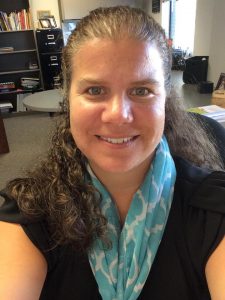Snow day science: six fun and informative ideas for projects
Are you home with your kids during this dangerous cold snap? Are you looking for things for them to do to keep them engaged and entertained and yet be encouraging their scientific thinking? Try some of these ideas. (Note: a few of these do involve going outdoors for short amounts of time. Please use your best judgment on these.)
Remember: when engaging in these activities with your kids, the goal is not to explain things to them but to let them talk through their ideas, with no fear of “being wrong.” We want kids to investigate, notice, and wonder – and then try to come up with their own explanations. They could even turn to the internet after they have come up with their own ideas to discover what the experts say. We don’t want to diminish their experiences by providing the “right” answers. Here are 6 ideas to try with your kids:
1) Ice Sculptures: See if your child can devise a way to freeze water into a particular shape.
- Can they make a sphere of ice?
- Can they make an ‘ice bowl’?
- Does hot water or cold water freeze faster?
- Does adding food coloring to the water make it freeze differently?
- If you freeze an activated glow stick inside your sculpture, will it glow in the dark?
2) Boiling water into sub-zero air: Bring a cup of water to a boil (or very near the boiling point). Put the water into a coffee mug, go outside and throw the water into the air. Now, encourage your child to experiment:
- Does it work with just hot tap water?
- Will it work with cold water?
- What happens if you add food coloring to the water?
- What if you try it with hot coffee instead of hot water?
3) Making ‘oobleck’: In a large container, mix 2 parts corn starch with 1 part water. Consider doing this with at least 2 cups of corn starch and 1 cup of water to give your child enough to experiment with.
- Will this substance pour out?
- What happens if you push it quickly with your finger?
- Can you float a marble on it or will it sink? Is this a solid or a liquid?
- Can you adjust the recipe and make it work?
- Can it be colored with food coloring?
4) Coffee Filter Flowers: Using non-permanent markers, draw a thick circle about halfway up a coffee filter. (View this video for help) Fold the coffee filter in half a few times to form a “tip” in the middle of the filter. Put just the tip in water and watch what happens!
- What brand of markers works best?
- Will it work with a pen too?
- What happens if you use rubbing alcohol instead of water?
- What would happen if you added drops of food coloring instead of markers?
5) Rainbow milk: Cover the bottom of a pie plate with milk (you want the milk layer ¼” or less). Put drops of food coloring near the middle of the milk so it takes on a “polka dot” look. Dip a q-tip in dish detergent and put the tip into the middle of the milk (do not stir).
- Do you think it would work differently with skim, 1%, 2% or whole milk?
- Would it work with water instead of milk?
- Does it work better with more milk in the dish?
- Does it work better with less milk in the dish?
- Does it work with non-dairy milk alternatives?
6) Color-changing Carnations: This one might require you to go to the store and get white carnations. Trim a few inches off the stem of a white carnation put it in the water you have colored with food coloring.
- What do you think will happen?
- You will have to check on the flower every hour or so and discuss what you see.
- What would happen if you switch the flower to a different color solution?
- What would happen if you split the stem down the middle and put each half into a different colored water solution?
Try out some of these projects, make a video of what happens and send it to us Mandie Sanderman or Kay Schmalen. We’d love to see and hear all about what at-home science your kids are doing on these cold days! Remember: let your child do the thinking and explaining. The emphasis isn’t on the answer, but the discovery and their explanations about the evidence of their thinking!
 Reach out to the author: Mandie Sanderman, Science Consultant for Central Rivers AEA.
Reach out to the author: Mandie Sanderman, Science Consultant for Central Rivers AEA.
